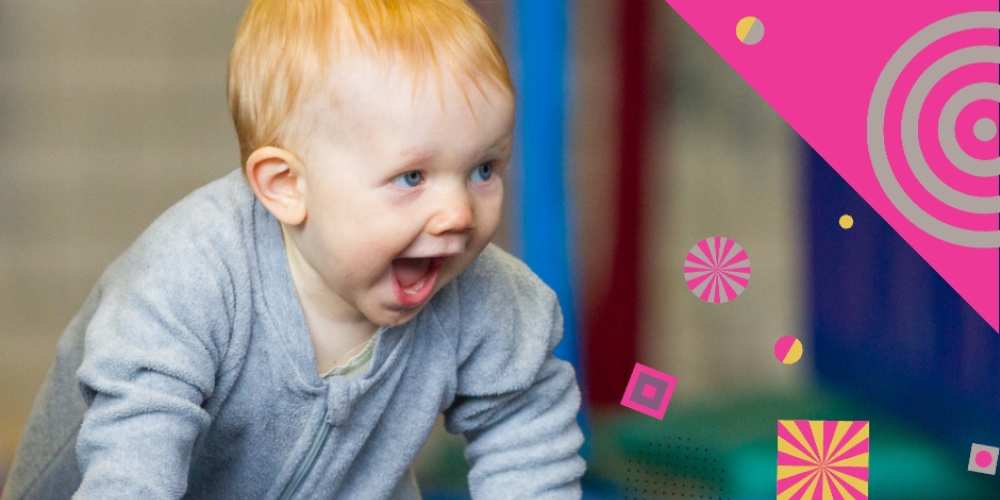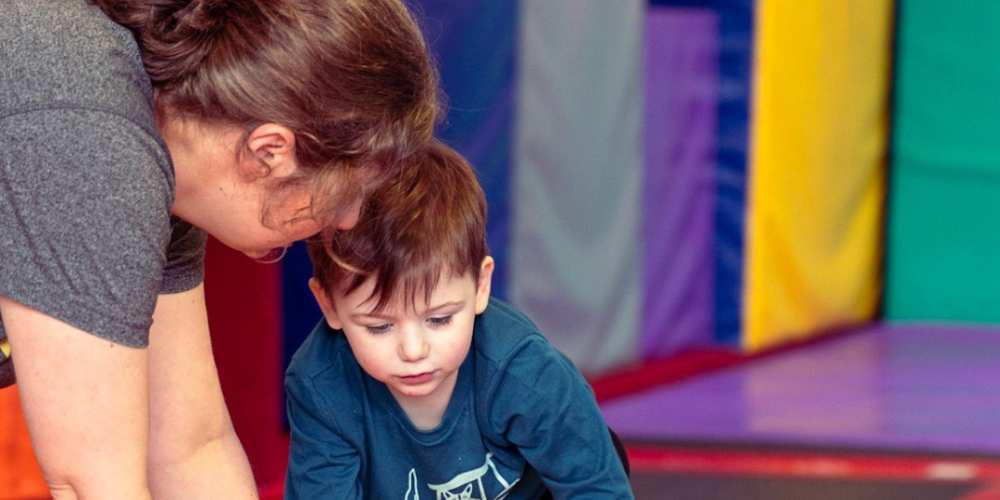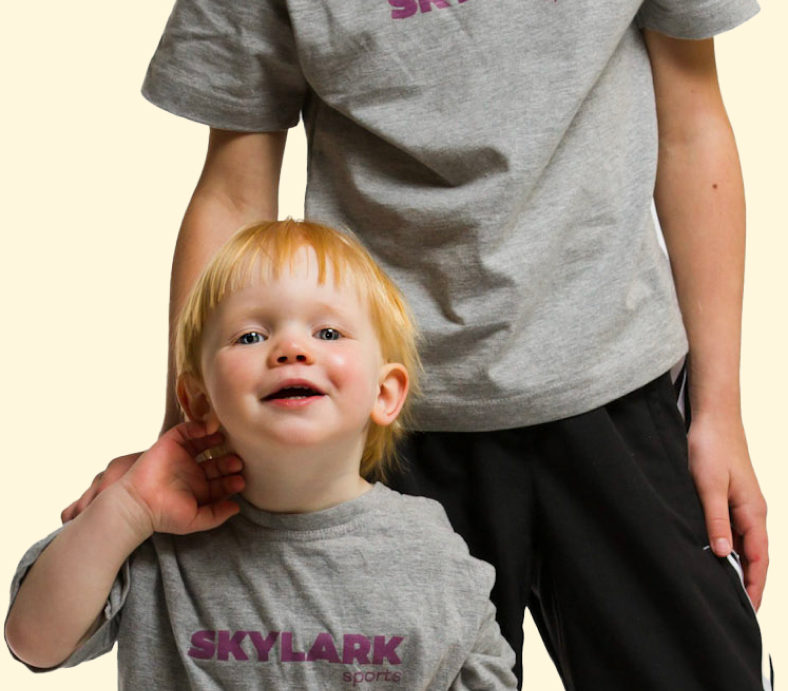As a new parent, you're overwhelmed with many alternatives for keeping your child active and interested.
As you navigate through the whirlwind of diaper changes, late-night feedings, and adorable baby giggles, you're likely facing many choices – including how to keep your little one active and engaged. In a world where options seem endless and advice pours in from all directions, you might have stumbled upon the debate of baby gymnastics versus baby yoga. It's like comparing apples and oranges, which are deliciously healthy yet have different tastes.
So, let's dig into this interesting topic and look into the advantages and disadvantages of each, leading you to make an informed decision that matches your baby's personality and your family's lifestyle. After all, whether your bundle of joy does tummy time twists or pint-sized postures, the most important thing is creating lovely moments full of love, movement, and smiles.
What is Baby Gymnastics?
Baby Gymnastics is an organized and entertaining developmental movement program for newborns and young children to promote their physical talents and motor skills. Baby gymnastics increases physical strength, flexibility, balance, and spatial awareness via carefully developed exercises and activities.
In a normal baby gymnastics session, your babies are guided through various activities that stimulate the development of important muscle groups. Stretching, rolling, crawling simulations, tummy time routines, and controlled reaching and grasping activities are common. The classes are led by qualified instructors who consider each baby's specific developmental stage.
It's extremely important to remember that baby gymnastics lessons are often created to be soft and age-appropriate, emphasizing healthy growth rather than rigorous training. As with any baby's physical exercise, safety, and comfort come first, and parents or other caregivers actively participate in leading and supervising the activities.
What is Baby Yoga?
Baby yoga is a gentler type designed just for your little one. Consider comfortable stretches and cute positions to help your baby relax, become more flexible, and form a particular bond with you. Baby yoga sessions are about establishing a peaceful and caring environment where you and your baby may experience mindful movements and pleasant moments.
You'll discover activities geared to your baby's requirements in these courses. There will be gentle stretches for infants, micro yoga postures for their tiny bodies, and even some light massages to help them feel all snug and comfortable.
The charm of baby yoga lies not only in the practices but also in the quality time you spend with your child. You'll both feel better, and it may even lead to improved sleep and reduced fussiness for your kid. Plus, those beautiful baby-sized stretches and postures are impossible to resist!

Baby Gymnastics vs. Baby Yoga: Key Differences
Baby Gymnastics and Baby Yoga are great ways to nurture your baby's growth while strengthening the parent-child relationship. While both hobbies have various advantages, they have specific traits that distinguish them. Let's compare and contrast Baby Gymnastics and Baby Yoga to assist you in making an informed decision based on your baby's requirements and your family's preferences.
Physical Concentration
Baby Gymnastics: Physical development is emphasized heavily in baby gymnastics. It consists of a sequence of planned motions and exercises that focus on certain muscle groups. These exercises improve muscle strength, coordination, and general motor abilities. Rolling, crawling simulations, reaching for items, and tummy time exercises are common in baby gymnastics programs. The objective is to assist newborns in meeting developmental milestones and laying a solid foundation for physical growth.
Baby Yoga: Baby yoga, on the other hand, emphasizes relaxation, flexibility, and sensory awareness. Baby yoga programs use gentle movements and postures to improve flexibility in the baby's muscles and joints. Infant yoga sessions frequently use stretching, postures, and massage methods to help the baby's physical comfort and relaxation.
Emphasis on Bonding
Baby Gymnastics: Although bonding is a natural part of any caregiver-baby interaction, baby gymnastics programs often emphasize the physical than the emotional aspects of growth. These programs allow parents or other caregivers to interact with their newborns via amusing movements, but the primary goal is to develop the baby's physical skills.
Baby Yoga: In baby yoga, the development of an emotional connection between the caregiver and the child is given priority. It promotes peaceful conversation and group relaxation. Baby yoga classes produce a serene and caring atmosphere where the caregiver's presence, touch, and calming voice enhance the baby's sense of security and well-being.
Movement Style
Baby Gymnastics: The movements used in baby gymnastics are often inspired by the infant's developmental milestones. Activities that enhance motor skills development include those that imitate motions like rolling, crawling, and reaching. These motions enable the infant to discover their physical prowess and progressively develop control over their movements.
Baby Yoga: Focusing on flexibility and relaxation, baby yoga encompasses a variety of gentle stretches, postures, and motions. These movements may include stretches that resemble yoga postures and rhythmic rocking and swaying that calms your baby.
Atmosphere
Baby Gymnastics: Classes for baby gymnastics often have a joyful and lively environment. They promote active play and exploration, frequently including colorful accessories and hands-on games stimulate the baby's senses and promote mobility.
Baby Yoga: The ambiance is calm and serene during baby yoga lessons. The goal is to create a serene atmosphere that encourages unwinding and mindfulness. The caregiver and the infant benefit from a sense of peace through dim lighting, calming music, and soft movements.
Developmental Goals
Baby Gymnastics: Enhancing physical ability is infant gymnastics' main objective in terms of development. This involves enhancing physical fitness, coordination, and spatial awareness. The exercises in baby gymnastics lessons are specifically created to assist the baby's developmental milestones and foster the growth of their general motor skills.
Baby Yoga: The goal of baby yoga is to promote both physical and emotional growth. While encouraging physical comfort and flexibility, it also strongly emphasizes establishing a sense of relaxation and emotional connection for the infant and the caregiver.

Choosing the Right Approach for Your Baby
Choosing the best method for nurturing your baby's growth is an exciting yet careful decision. Baby Gymnastics and Baby Yoga provide amazing chances for connection and learning, but how do you know which is best for your child? Let's look at a few important points to help you make a smart choice that meets your baby's needs and your family's preferences.
Your Baby's Temperament
Consider your baby's personality for a moment. Is your child lively and inquisitive, always looking for new experiences? Baby Gymnastics may be a good fit since it provides a dynamic atmosphere for your baby to explore and improve their motor skills. Baby Yoga may provide a tranquil area for relaxation and bonding if your baby is calmer and prefers gentle interactions.
Developmental Goals
Consider your priorities for your baby's growth. Baby Gymnastics may be the way to go to improve your physical strength, coordination, and motor abilities. If you want to encourage emotional connection and relaxation, Baby Yoga is a thoughtful method that fosters physical and emotional well-being.
Bonding Time
Consider how much time you want to spend with your infant. Baby Gymnastics promotes liveliness and movement, while Baby Yoga promotes peaceful bonding via gentle touch and relaxation. Consider which strategy best fits your goal for shared experiences and connection.
Baby's Age and Development
Take into account your baby's developmental stage. Baby gymnastics frequently parallel developmental stages, making it appropriate for newborns just starting to explore movement. Baby Yoga, emphasizing gentle stretches and relaxation, is adaptable to newborns and infants of all ages.
Personal Preferences
Consider your tastes and degree of comfort. Do you enjoy playing sports and moving around? Or do you picture a tranquil setting for private moments of intimacy? Following your instincts, you can choose a strategy based on your parenting style.
Class Atmosphere and Instructor Qualifications
To obtain a feel for the classroom environment and teaching style, attend sample classes or talk with the teachers. If you enjoy being active and lively, a Baby Gymnastics class is up your alley; if you value peace, a Baby Yoga session is more your style.
Trial and Error
Always keep in mind that no one solution works for everyone. You may always try both strategies to see how your baby reacts. They could enjoy the diversity or develop a definite preference over time.
Safety and Health
Give your baby's health and safety priority. Whichever strategy you use, ensure the activities are appropriate for your child's age, health, and comfort level.
Frequently Asked Question
Can I practice Baby Gymnastics at home, or is it preferable to enroll in a class?
Both possibilities are viable. Attending a class guided by an experienced instructor may offer direction and guarantee proper skills. Simple Baby Gymnastics exercises may be included in your regular home interactions.
How can I tell if I'm doing Baby Gymnastics activities properly?
The teacher will walk you through the exercises if you're in a class. Pay attention to how your baby feels and reacts when practicing at home. They appear content and interested, so you're on the correct course.
How frequently should I take my kid to Baby Gymnastics classes?
The key is consistency. Starting with a few brief sessions each week and progressively increasing the frequency might be a suitable strategy as your infant ages.
What if my kid cries or doesn't appear interested in kid Gymnastics?
Baby emotions vary. Thus, not every session will be successful. You can stop and try again later if your baby appears disinterested or upset. Keep the encounter pleasurable for both of you at all times.
Conclusion
In the dynamic stage of parenting, the decision between Baby Gymnastics and Baby Yoga is a unique road built by your baby's personality and your family's objectives. Each activity provides a distinctive starting point for your baby's development, offering a blank canvas for bonding, growth, and shared moments of delight. Remember that there is no one-size-fits-all solution; rather, it is a wonderful journey of discovery driven by your baby's signs and your loving instincts.
So, whether your days are filled with energetic tumbles, laughter, stretches, calm poses, and peaceful hugs, the amazing parenting experience continues. Embrace the choices that fit your family's rhythm, and remember that the love, care, and commitment you put in your baby's early years shape the unique tale of their life. May this delightful journey be filled with cherished memories and the feeling of wonder that only the path of parenthood can deliver.

